Ashish Khetan
PPLqa: An Unsupervised Information-Theoretic Quality Metric for Comparing Generative Large Language Models
Nov 22, 2024Abstract:We propose PPLqa, an easy to compute, language independent, information-theoretic metric to measure the quality of responses of generative Large Language Models (LLMs) in an unsupervised way, without requiring ground truth annotations or human supervision. The method and metric enables users to rank generative language models for quality of responses, so as to make a selection of the best model for a given task. Our single metric assesses LLMs with an approach that subsumes, but is not explicitly based on, coherence and fluency (quality of writing) and relevance and consistency (appropriateness of response) to the query. PPLqa performs as well as other related metrics, and works better with long-form Q\&A. Thus, PPLqa enables bypassing the lengthy annotation process required for ground truth evaluations, and it also correlates well with human and LLM rankings.
Improving language models fine-tuning with representation consistency targets
May 23, 2022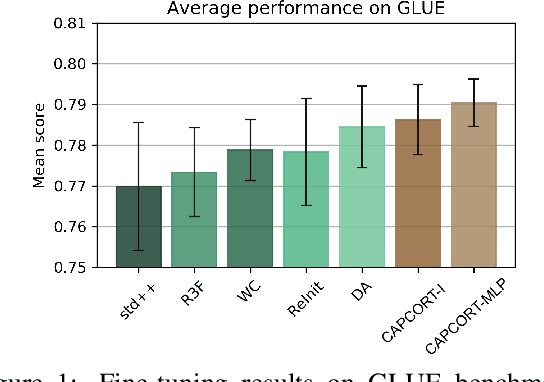

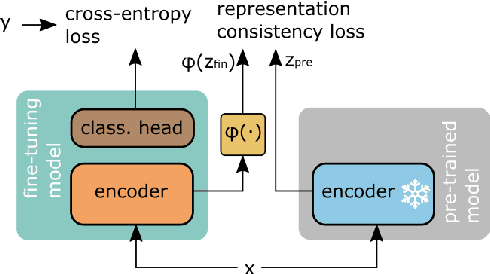

Abstract:Fine-tuning contextualized representations learned by pre-trained language models has become a standard practice in the NLP field. However, pre-trained representations are prone to degradation (also known as representation collapse) during fine-tuning, which leads to instability, suboptimal performance, and weak generalization. In this paper, we propose a novel fine-tuning method that avoids representation collapse during fine-tuning by discouraging undesirable changes in the representations. We show that our approach matches or exceeds the performance of the existing regularization-based fine-tuning methods across 13 language understanding tasks (GLUE benchmark and six additional datasets). We also demonstrate its effectiveness in low-data settings and robustness to label perturbation. Furthermore, we extend previous studies of representation collapse and propose several metrics to quantify it. Using these metrics and previously proposed experiments, we show that our approach obtains significant improvements in retaining the expressive power of representations.
Pyramid-BERT: Reducing Complexity via Successive Core-set based Token Selection
Mar 27, 2022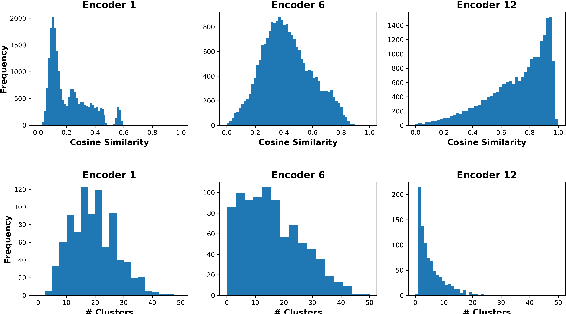
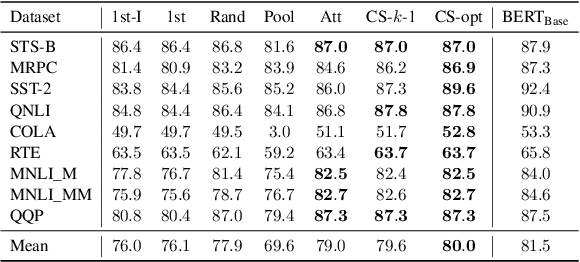
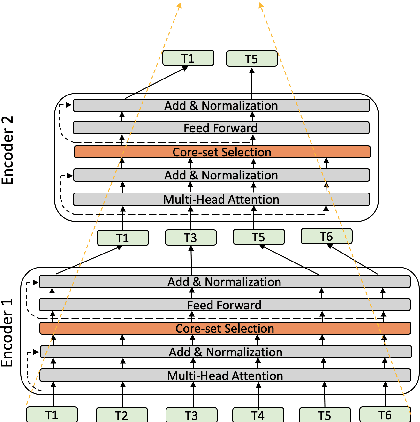
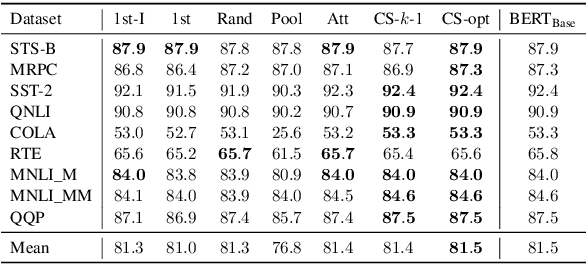
Abstract:Transformer-based language models such as BERT have achieved the state-of-the-art performance on various NLP tasks, but are computationally prohibitive. A recent line of works use various heuristics to successively shorten sequence length while transforming tokens through encoders, in tasks such as classification and ranking that require a single token embedding for prediction. We present a novel solution to this problem, called Pyramid-BERT where we replace previously used heuristics with a {\em core-set} based token selection method justified by theoretical results. The core-set based token selection technique allows us to avoid expensive pre-training, gives a space-efficient fine tuning, and thus makes it suitable to handle longer sequence lengths. We provide extensive experiments establishing advantages of pyramid BERT over several baselines and existing works on the GLUE benchmarks and Long Range Arena datasets.
TabTransformer: Tabular Data Modeling Using Contextual Embeddings
Dec 11, 2020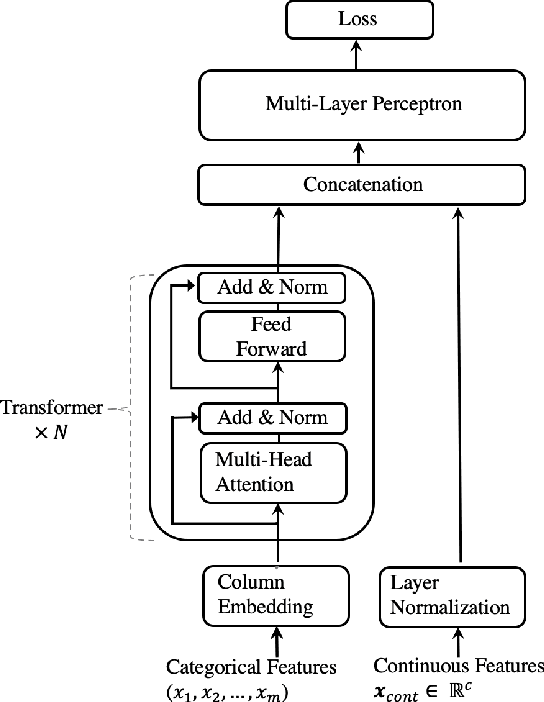
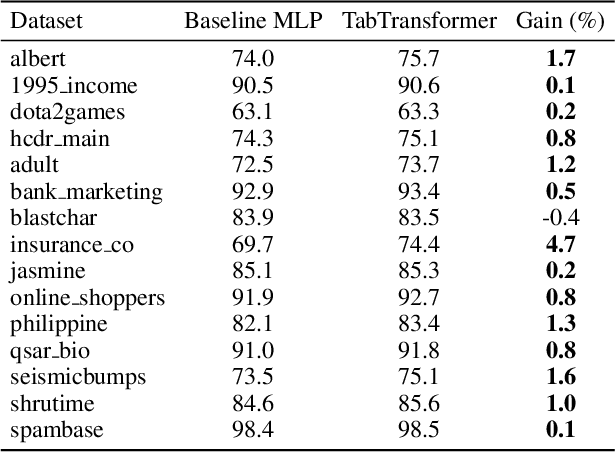

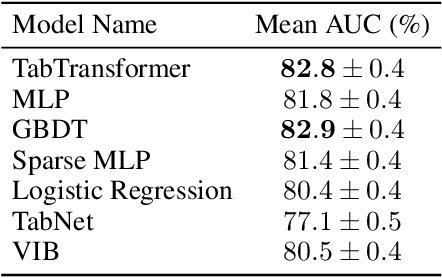
Abstract:We propose TabTransformer, a novel deep tabular data modeling architecture for supervised and semi-supervised learning. The TabTransformer is built upon self-attention based Transformers. The Transformer layers transform the embeddings of categorical features into robust contextual embeddings to achieve higher prediction accuracy. Through extensive experiments on fifteen publicly available datasets, we show that the TabTransformer outperforms the state-of-the-art deep learning methods for tabular data by at least 1.0% on mean AUC, and matches the performance of tree-based ensemble models. Furthermore, we demonstrate that the contextual embeddings learned from TabTransformer are highly robust against both missing and noisy data features, and provide better interpretability. Lastly, for the semi-supervised setting we develop an unsupervised pre-training procedure to learn data-driven contextual embeddings, resulting in an average 2.1% AUC lift over the state-of-the-art methods.
PruneNet: Channel Pruning via Global Importance
May 22, 2020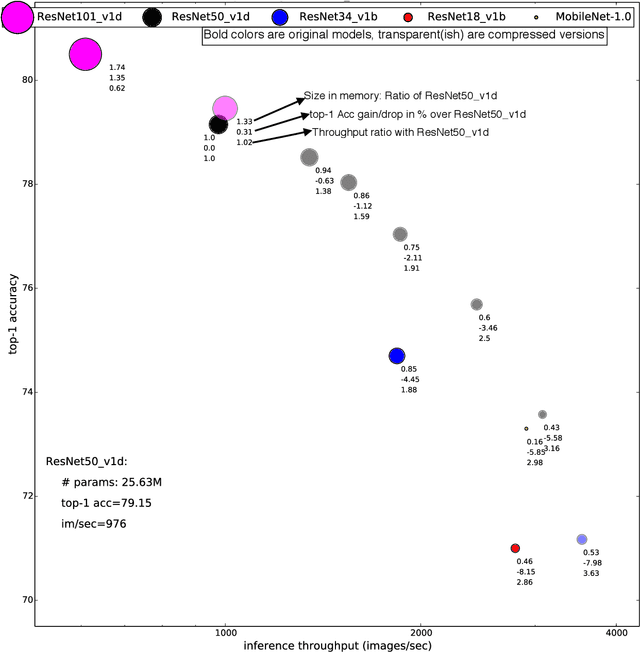
Abstract:Channel pruning is one of the predominant approaches for accelerating deep neural networks. Most existing pruning methods either train from scratch with a sparsity inducing term such as group lasso, or prune redundant channels in a pretrained network and then fine tune the network. Both strategies suffer from some limitations: the use of group lasso is computationally expensive, difficult to converge and often suffers from worse behavior due to the regularization bias. The methods that start with a pretrained network either prune channels uniformly across the layers or prune channels based on the basic statistics of the network parameters. These approaches either ignore the fact that some CNN layers are more redundant than others or fail to adequately identify the level of redundancy in different layers. In this work, we investigate a simple-yet-effective method for pruning channels based on a computationally light-weight yet effective data driven optimization step that discovers the necessary width per layer. Experiments conducted on ILSVRC-$12$ confirm effectiveness of our approach. With non-uniform pruning across the layers on ResNet-$50$, we are able to match the FLOP reduction of state-of-the-art channel pruning results while achieving a $0.98\%$ higher accuracy. Further, we show that our pruned ResNet-$50$ network outperforms ResNet-$34$ and ResNet-$18$ networks, and that our pruned ResNet-$101$ outperforms ResNet-$50$.
schuBERT: Optimizing Elements of BERT
May 09, 2020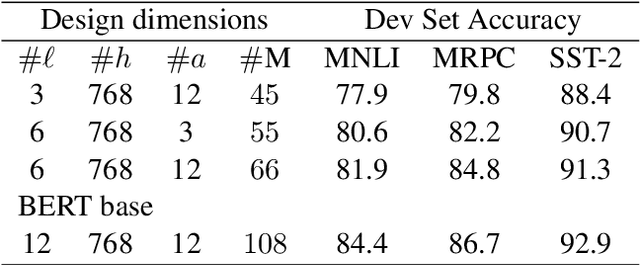
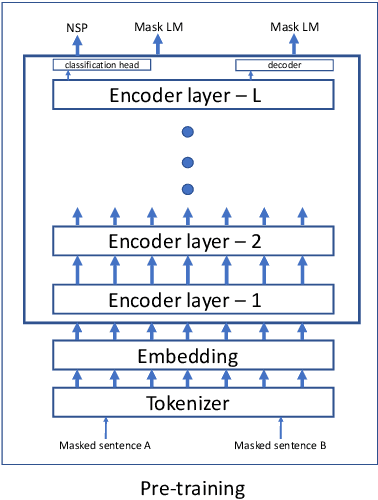
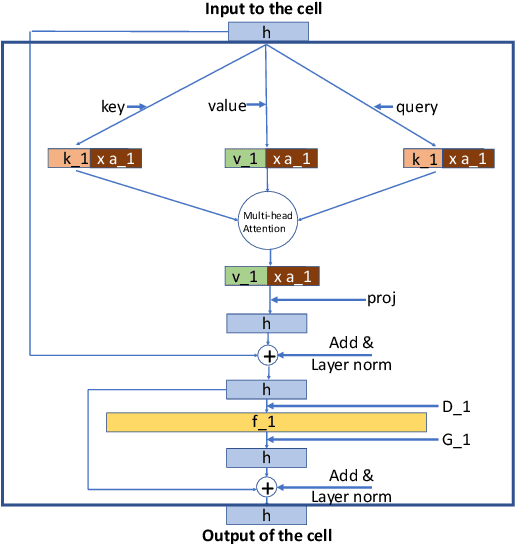
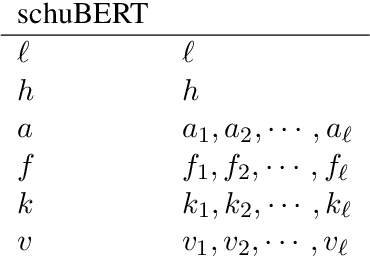
Abstract:Transformers \citep{vaswani2017attention} have gradually become a key component for many state-of-the-art natural language representation models. A recent Transformer based model- BERT \citep{devlin2018bert} achieved state-of-the-art results on various natural language processing tasks, including GLUE, SQuAD v1.1, and SQuAD v2.0. This model however is computationally prohibitive and has a huge number of parameters. In this work we revisit the architecture choices of BERT in efforts to obtain a lighter model. We focus on reducing the number of parameters yet our methods can be applied towards other objectives such FLOPs or latency. We show that much efficient light BERT models can be obtained by reducing algorithmically chosen correct architecture design dimensions rather than reducing the number of Transformer encoder layers. In particular, our schuBERT gives $6.6\%$ higher average accuracy on GLUE and SQuAD datasets as compared to BERT with three encoder layers while having the same number of parameters.
Robust conditional GANs under missing or uncertain labels
Jun 09, 2019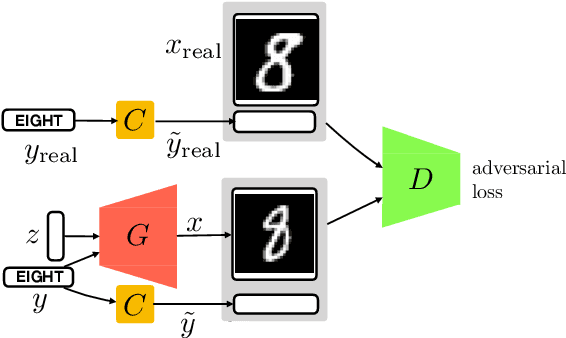

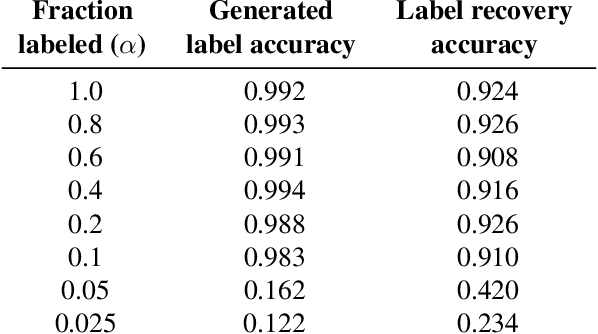
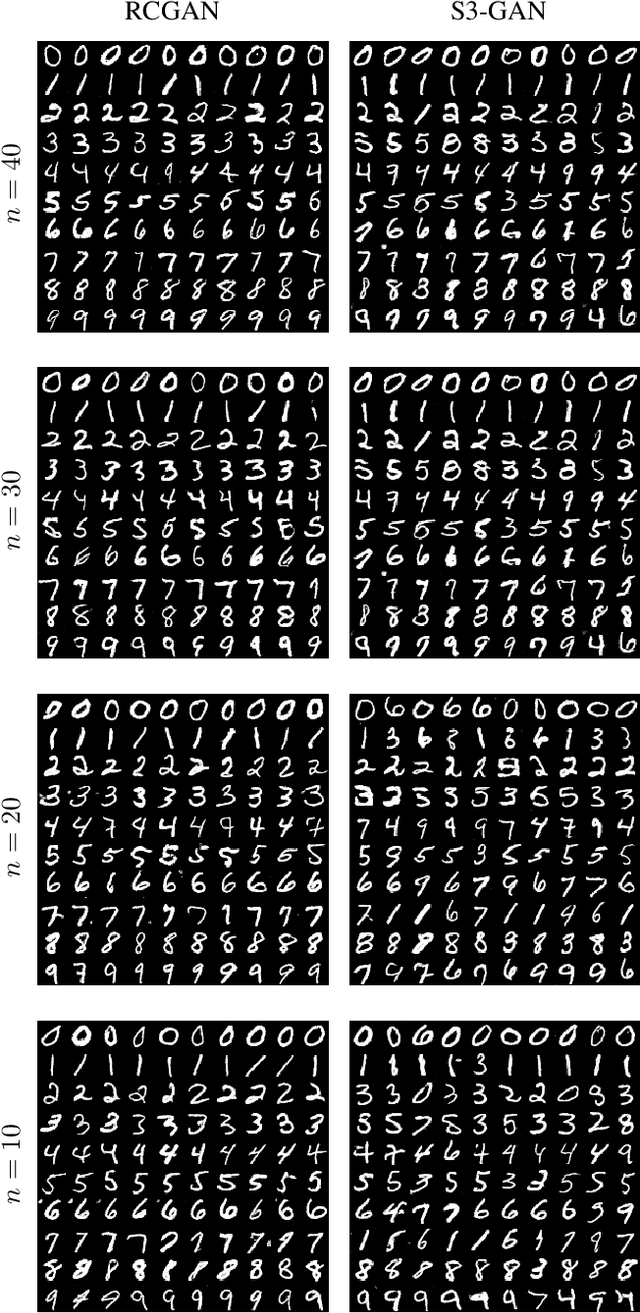
Abstract:Matching the performance of conditional Generative Adversarial Networks with little supervision is an important task, especially in venturing into new domains. We design a new training algorithm, which is robust to missing or ambiguous labels. The main idea is to intentionally corrupt the labels of generated examples to match the statistics of the real data, and have a discriminator process the real and generated examples with corrupted labels. We showcase the robustness of this proposed approach both theoretically and empirically. We show that minimizing the proposed loss is equivalent to minimizing true divergence between real and generated data up to a multiplicative factor, and characterize this multiplicative factor as a function of the statistics of the uncertain labels. Experiments on MNIST dataset demonstrates that proposed architecture is able to achieve high accuracy in generating examples faithful to the class even with only a few examples per class.
DARC: Differentiable ARchitecture Compression
May 20, 2019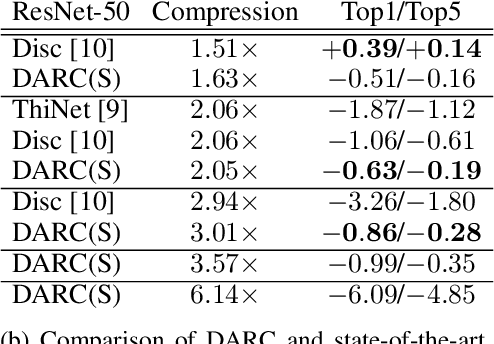
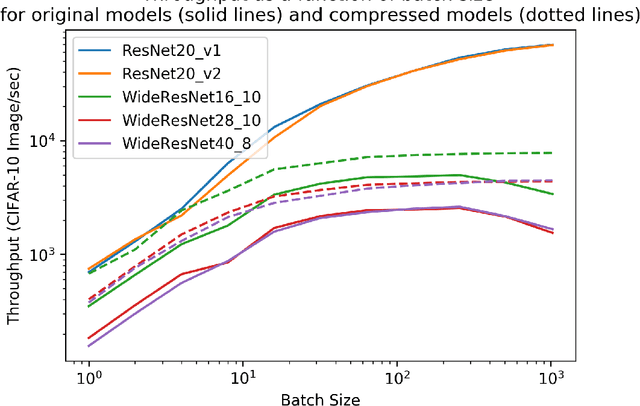
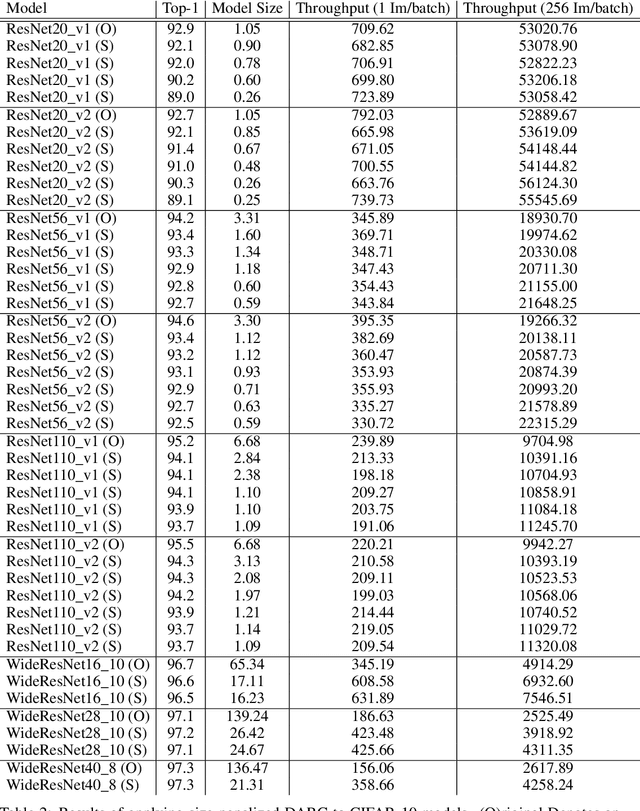
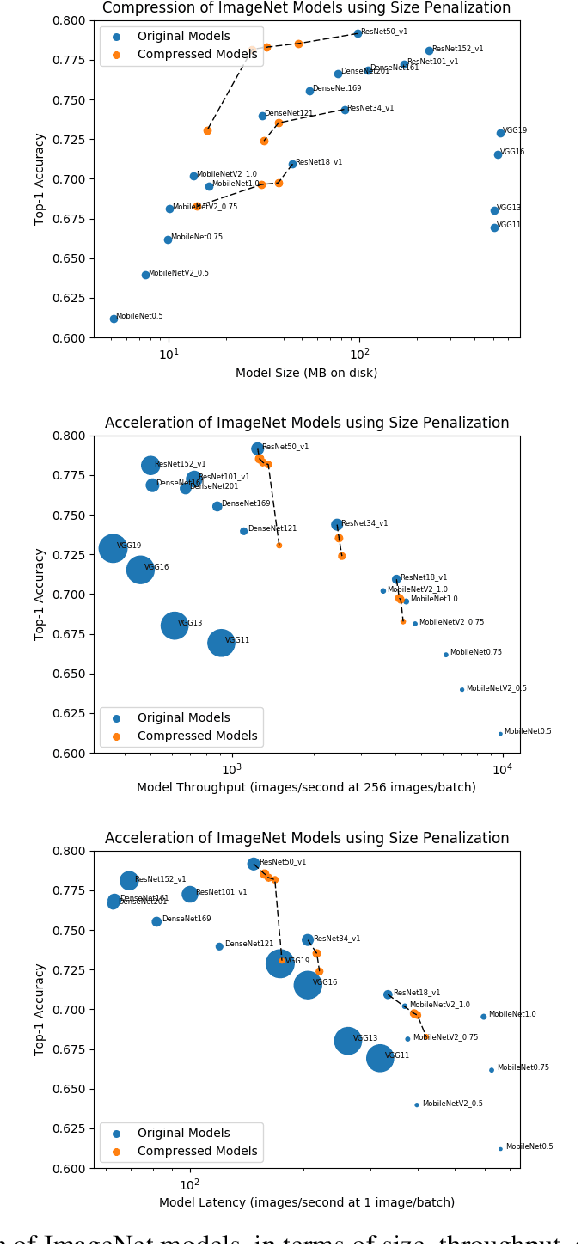
Abstract:In many learning situations, resources at inference time are significantly more constrained than resources at training time. This paper studies a general paradigm, called Differentiable ARchitecture Compression (DARC), that combines model compression and architecture search to learn models that are resource-efficient at inference time. Given a resource-intensive base architecture, DARC utilizes the training data to learn which sub-components can be replaced by cheaper alternatives. The high-level technique can be applied to any neural architecture, and we report experiments on state-of-the-art convolutional neural networks for image classification. For a WideResNet with $97.2\%$ accuracy on CIFAR-10, we improve single-sample inference speed by $2.28\times$ and memory footprint by $5.64\times$, with no accuracy loss. For a ResNet with $79.15\%$ Top1 accuracy on ImageNet, we improve batch inference speed by $1.29\times$ and memory footprint by $3.57\times$ with $1\%$ accuracy loss. We also give theoretical Rademacher complexity bounds in simplified cases, showing how DARC avoids overfitting despite over-parameterization.
Number of Connected Components in a Graph: Estimation via Counting Patterns
Dec 01, 2018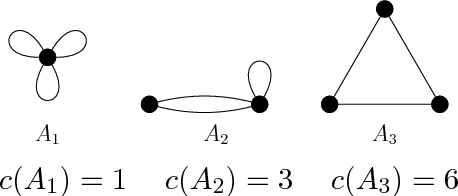
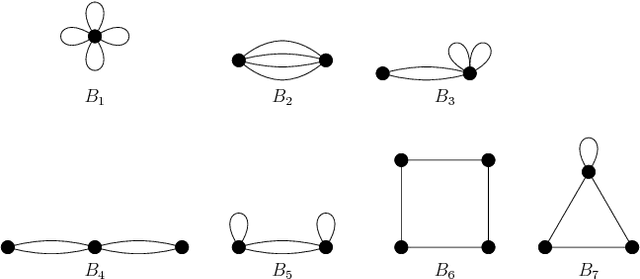
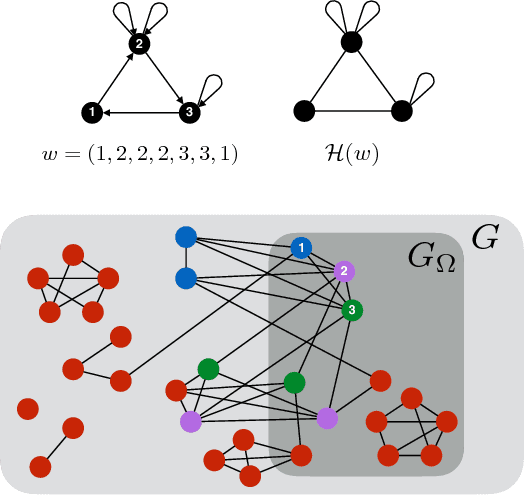
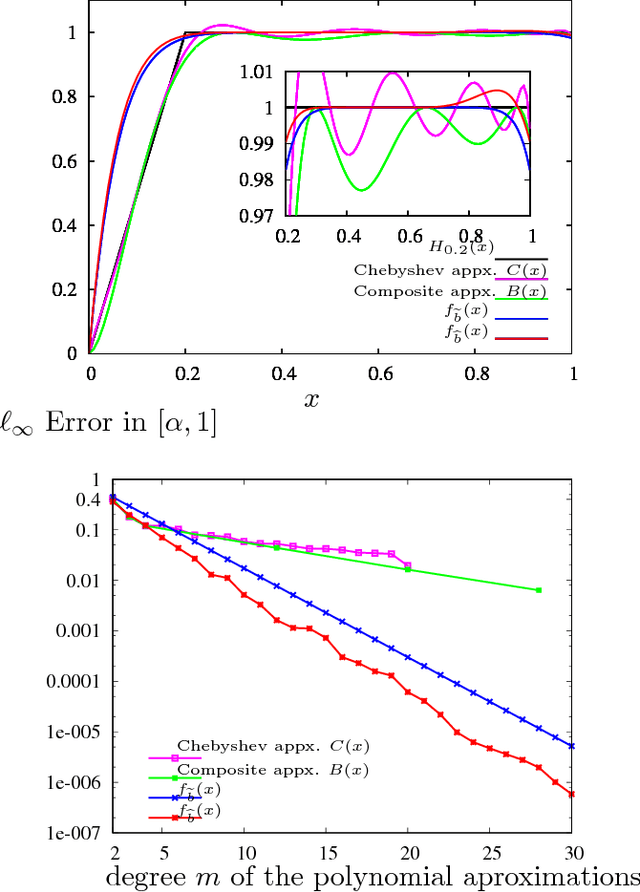
Abstract:Due to the limited resources and the scale of the graphs in modern datasets, we often get to observe a sampled subgraph of a larger original graph of interest, whether it is the worldwide web that has been crawled or social connections that have been surveyed. Inferring a global property of the original graph from such a sampled subgraph is of a fundamental interest. In this work, we focus on estimating the number of connected components. It is a challenging problem and, for general graphs, little is known about the connection between the observed subgraph and the number of connected components of the original graph. In order to make this connection, we propose a highly redundant and large-dimensional representation of the subgraph, which at first glance seems counter-intuitive. A subgraph is represented by the counts of patterns, known as network motifs. This representation is crucial in introducing a novel estimator for the number of connected components for general graphs, under the knowledge of the spectral gap of the original graph. The connection is made precise via the Schatten $k$-norms of the graph Laplacian and the spectral representation of the number of connected components. We provide a guarantee on the resulting mean squared error that characterizes the bias variance tradeoff. Experiments on synthetic and real-world graphs suggest that we improve upon competing algorithms for graphs with spectral gaps bounded away from zero.
Robustness of Conditional GANs to Noisy Labels
Nov 08, 2018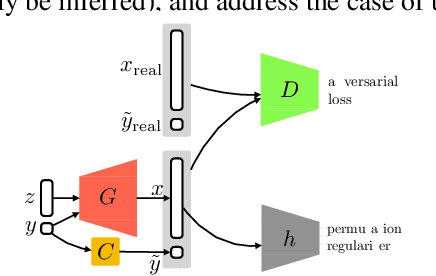
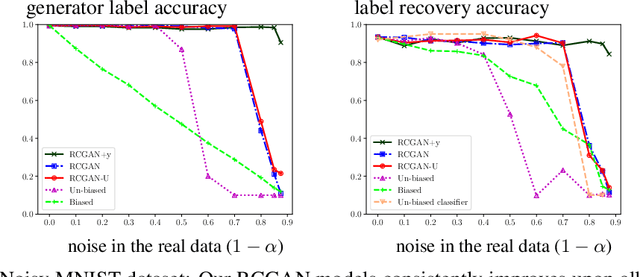
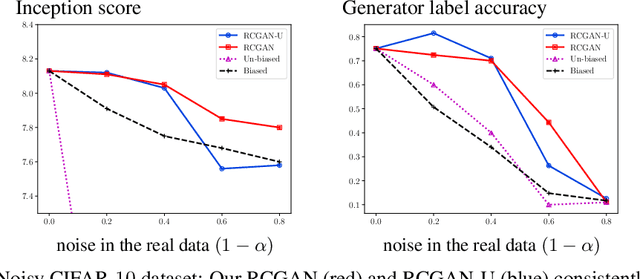
Abstract:We study the problem of learning conditional generators from noisy labeled samples, where the labels are corrupted by random noise. A standard training of conditional GANs will not only produce samples with wrong labels, but also generate poor quality samples. We consider two scenarios, depending on whether the noise model is known or not. When the distribution of the noise is known, we introduce a novel architecture which we call Robust Conditional GAN (RCGAN). The main idea is to corrupt the label of the generated sample before feeding to the adversarial discriminator, forcing the generator to produce samples with clean labels. This approach of passing through a matching noisy channel is justified by corresponding multiplicative approximation bounds between the loss of the RCGAN and the distance between the clean real distribution and the generator distribution. This shows that the proposed approach is robust, when used with a carefully chosen discriminator architecture, known as projection discriminator. When the distribution of the noise is not known, we provide an extension of our architecture, which we call RCGAN-U, that learns the noise model simultaneously while training the generator. We show experimentally on MNIST and CIFAR-10 datasets that both the approaches consistently improve upon baseline approaches, and RCGAN-U closely matches the performance of RCGAN.
 Add to Chrome
Add to Chrome Add to Firefox
Add to Firefox Add to Edge
Add to Edge